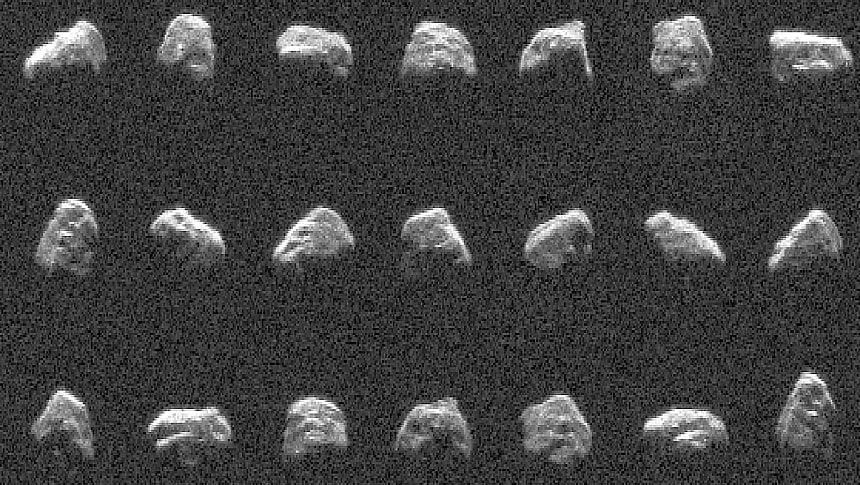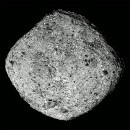On a cosmic level, asteroids passing in relative proximity to our planet are not uncommon – after all, there are over 20,000 near-Earth objects out there that we know of. But every now and then, some of these things fly by, and they are so interesting that the people watching out for them feel the need to let us know all about it.
Such is the case with a couple of unrelated asteroids that were detected by the Goldstone Solar System Radar (GSSR) at the end of last month. And these pieces of rock are both fascinating in themselves and scary in the way they managed to sneak past our observation tools and how close they came to our world.
I'll start with the scary part because that's what gets our blood pumping. And it all has to do with an asteroid called 2024 MK. That's a relatively large celestial body, with a width of 500 feet (150 meters) and elongated in shape, with boulders measuring as much as 30 feet (ten meters) on its surface.
2024 MK was first spotted on June 16, just 13 days before it was to make a very close pass of Earth. The thing zipped by at a distance of just 184,000 miles (295,000 km). That may not seem like much, but consider that it's closer than the Moon (three quarters of the distance).
NASA says it's not very common for this asteroid to come so close to us, as the asteroid only does this about a couple of decades or so. The agency is quite happy this happened, as it now can learn more about 2024 MK.
On paper, the asteroid is classified as a potentially hazardous one. Its close pass to Earth shortened its 3.3-year orbital period around the Sun by 24 days, due to the effects of our planet's gravity, but even so NASA says it should not pose a threat to us in the foreseeable future.
The second asteroid that got astronomers all worked up is one called 2011 UL21. Discovered in 2011, it's absolutely huge at almost one mile (1.5 km) wide. Luckily, it flew by much further away, at a distance of 4.1 million miles (6.6 million km), 17 times the distance between the Earth and the Moon.
The asteroid made its closest approach on June 27, marking the first time it came close enough to be imaged by radar. Research conducted on it revealed that the asteroid is, in fact, a binary system, being accompanied by a moon that orbits it at a distance of 1.9 miles (three km).
This asteroid too is considered a potential danger to our world, but, again, we should be clear of any harm from it in the immediate future.
I'll start with the scary part because that's what gets our blood pumping. And it all has to do with an asteroid called 2024 MK. That's a relatively large celestial body, with a width of 500 feet (150 meters) and elongated in shape, with boulders measuring as much as 30 feet (ten meters) on its surface.
2024 MK was first spotted on June 16, just 13 days before it was to make a very close pass of Earth. The thing zipped by at a distance of just 184,000 miles (295,000 km). That may not seem like much, but consider that it's closer than the Moon (three quarters of the distance).
NASA says it's not very common for this asteroid to come so close to us, as the asteroid only does this about a couple of decades or so. The agency is quite happy this happened, as it now can learn more about 2024 MK.
On paper, the asteroid is classified as a potentially hazardous one. Its close pass to Earth shortened its 3.3-year orbital period around the Sun by 24 days, due to the effects of our planet's gravity, but even so NASA says it should not pose a threat to us in the foreseeable future.
The second asteroid that got astronomers all worked up is one called 2011 UL21. Discovered in 2011, it's absolutely huge at almost one mile (1.5 km) wide. Luckily, it flew by much further away, at a distance of 4.1 million miles (6.6 million km), 17 times the distance between the Earth and the Moon.
The asteroid made its closest approach on June 27, marking the first time it came close enough to be imaged by radar. Research conducted on it revealed that the asteroid is, in fact, a binary system, being accompanied by a moon that orbits it at a distance of 1.9 miles (three km).
This asteroid too is considered a potential danger to our world, but, again, we should be clear of any harm from it in the immediate future.












